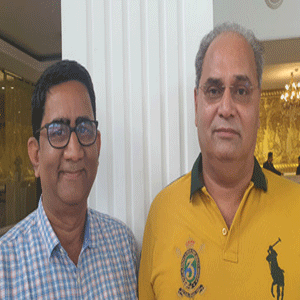
In today’s world where packaging matters, labels are more than just stickers. They are the face of a product, the voice of a brand, and the key to success. No wonder the Indian label industry has witnessed a remarkable expansion in recent years, fueled by the rapid growth of the organized packaging sector. With the rise in demand for high-quality labels, one name has emerged as a frontrunner in this dynamic landscape – Procam Flexoprints, a Mumbai-based manufacturer of self-adhesive labels in roll form.
Procam Flexoprints' success is closely intertwined with the growth of the organized retail sector and the increased need for packaging perishable products in India. “The growth of fast-moving consumer goods (FMCG) and automotive industries has also propelled the demand for premium labels”, adds Sanjay Gaitonde, Managing Director at Procam Flexoprints.
Procam Flexoprints offers a range of products besides self-adhesive roll-form labels, including wet glue labels, tags, shrink sleeves, in-mold labels, and booklet labels. The company’s flagship product, Raise-UV labels, stands out as a testament to its commitment to innovation. Manufactured through a hybrid printing process combining flexo-printing and screen printing, Raise-UV labels offer attractive aesthetics, with the option to incorporate different textures and fragrances if desired. Procam Flexoprints’ products primarily cater to food, liquor, cosmetics, toiletries, pharma, and agro-chemicals industries.
“We recognize the importance of timely product delivery in the labeling industry and have implemented efficient processes to ensure customers receive their products promptly. Quality issues have also long plagued the label industry, leading to rejections and customer dissatisfaction”, explains Sunil Bondre, Managing Director at Procam Flexoprints. This ISO 9001:2015 certified company employs up-to-date machinery, technologies, and processes to ensure each printed label meets the highest standards of quality and excellence, eliminating defects and rejections that customers often face. Procam Flexoprints’ unwavering commitment to building long-term relationships and creating goodwill through high-quality results set the company apart. By integrating strict quality control, deep industry knowledge, and technological superiority, Procam Flexoprints has emerged as a preferred vendor in the market.
Manufactured through a hybrid printing process combining flexo printing and screen printing, Raise- UV labels offer attractive aesthetics, with the option to incorporate different textures and fragrances if desired
Procam Flexoprints boasts impressive expertise in prepress with a dedicated in-house team specializing in designing artwork tailored to each client's requirements and ensuring that it is print-ready for the flexopress. The company has also built a strong workforce of over 50 skilled post-press employees who bring their experience and craftsmanship to every project. With the perfect blend of a creative pre-press team, a proficient post-press workforce, and state-of-the-art machinery, Procam Flexoprints has achieved steady growth over the years.
Starting with just one Nilpeter servo-driven flexo-press and a team of 25 employees in 2007, Procam Flexoprints has expanded to four advanced Nilpeter presses and over 150 employees. From a single unit of 2000 square feet at the time of inception to two locations spanning a total of 25,000 square feet today, the company has grown to cater to more than 200 clients, solidifying its position as a leader in the Indian label industry.
Procam Flexoprints envisions itself as a one-stop solution for all labeling needs, focusing on innovating and improving the quality of the final product. The company aims to stay at the forefront of the industry by continuously upgrading its technologies, processes, and machinery to provide prompt services, timely product delivery, and increased customer satisfaction. “With the growing importance of hybrid print¬ing in the Indian labeling industry, we plan on expanding our capabilities in this area, enabling the combination of various printing processes in a single pass”, concludes Gaitonde.
We use cookies to ensure you get the best experience on our website. Read more...